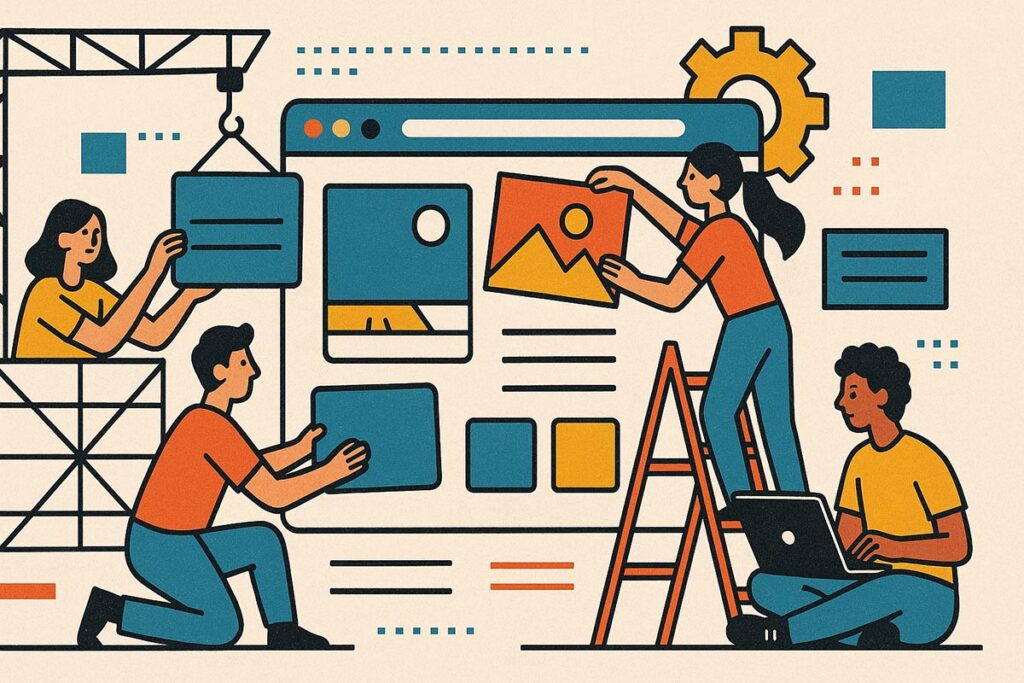Website Automation in Web Design Creates Value Through Productivity.
If your website looks good but doesn’t bring in leads or sales, it’s not doing its job.
That’s the hard truth. Many business owners invest thousands into flashy designs but are left wondering: Why aren’t visitors turning into customers?
The answer often lies in one overlooked factor—integrated automation.
In this guide, you’ll discover how to transform your website into a powerful conversion engine that not only attracts traffic but automatically turns that traffic into leads and clients. Whether you’re working with a website designer, a website design agency, or seeking out a web design service, the principles here can redefine how your site performs.
You Deserve a Website That Works as Hard as You Do
As a business owner, you likely have a lot on your plate: managing clients, leading a team, making strategic decisions. Your website should lighten that load, not add to it.
But if it’s not generating consistent leads or inquiries, that frustration builds. You’re not alone. Many business owners feel this disconnect—they paid for a website, but they didn’t get a sales tool.
It doesn’t have to be this way. There is a smarter, more efficient way to design websites that work behind the scenes, 24/7.
How We Help You Win Online
At Solutionarian Marketing & Web Design, we believe websites should be built to convert. Over the past decade, we’ve helped business owners from Campbell to San Jose unlock new revenue by combining effective web design with automation tools that streamline engagement.
We bring clarity, strategy, and technology together so your website does more than look good—it performs.
Five Steps to Turn Your Website Into a Conversion Machine
1. Build Around a Conversion Goal
We start by defining a primary action: Do you want users to book a call, download a lead magnet, or request a quote? Every part of your website should move the visitor toward that one clear objective.
2. Create Clear Visual Paths and Messaging
Visitors shouldn’t have to guess where to go. Strong headlines, compelling visuals, trust-building elements, and highly visible buttons eliminate confusion and boost engagement.
3. Automate Lead Capture and Follow-Up
Once someone fills out your contact form, the automation kicks in. Whether it’s a confirmation email, a follow-up SMS, or a link to schedule a meeting, the system handles it all. Tools like GoHighLevel, HubSpot, or Mailchimp can be integrated to ensure no lead goes cold.
4. Use Behavioral Triggers to Personalize the Experience
Set up your site to respond to what visitors do. If someone views your pricing page, send them a targeted follow-up email. If they abandon a cart or form, remind them. Automation lets your site respond in real-time, even when you’re off the clock.
5. Continually Measure and Improve
We don’t guess. We track heatmaps, analyze conversion paths, A/B test copy and layouts, and make data-driven tweaks. This constant optimization means your website keeps getting better at what it’s designed to do: convert.
According to HubSpot, businesses that automate lead management see a 10% or greater increase in revenue in 6–9 months.
Miss the Moment, Miss the Sale
Every day your website isn’t optimized with automation is another day you could be losing business.
- Prospects browse but never contact you.
- Hot leads get forgotten in your inbox.
- Your team spends hours doing what a smart workflow could handle in seconds.
A stagnant website doesn’t just waste your investment. It drains opportunity.
What Success Looks Like When You Get It Right
Imagine this:
A visitor clicks your ad and lands on your homepage. They’re immediately drawn in by your messaging. A clear call-to-action leads them to a form. They submit it and instantly receive a personalized email. Your CRM logs the interaction, books them on your calendar, and you wake up to a new appointment.
That’s what happens when design and automation work in sync.
One of our recent clients in Campbell saw:
- A 46% decrease in bounce rate
- A 270% increase in form submissions
- A smoother customer onboarding process powered by automated emails and task assignments
This isn’t luck. It’s smart design backed by proven systems.
Ready to Stop Guessing and Start Growing?
Let’s design a website that finally delivers on its promise. Not just a brochure, but a results-driven platform that converts, follows up, and books appointments while you focus on running your business.
Schedule your free strategy session today. You’ll walk away with clarity on what’s missing and how to fix it—even if you don’t hire us.
Don’t let another potential customer slip through the cracks. Let’s build your online advantage now.
FAQs
Q1: What is a conversion-focused website design?
A: It’s a website built to guide visitors toward taking a specific action like contacting you, booking a call, or making a purchase. Every design decision supports this objective.
Q2: Why is automation so important for web design?
A: Automation ensures leads are followed up instantly, personalized interactions are scalable, and you save time while improving conversions.
Q3: Can automation work with any website platform?
A: Yes. Most platforms (WordPress, Webflow, Shopify, etc.) support integrations with CRMs, email marketing, and automation tools.
Q4: What’s the typical cost of a website with automation?
A: Prices range from $3,500 to $10,000 depending on complexity and tools used, but the ROI typically outweighs the cost within the first 3 to 6 months.

